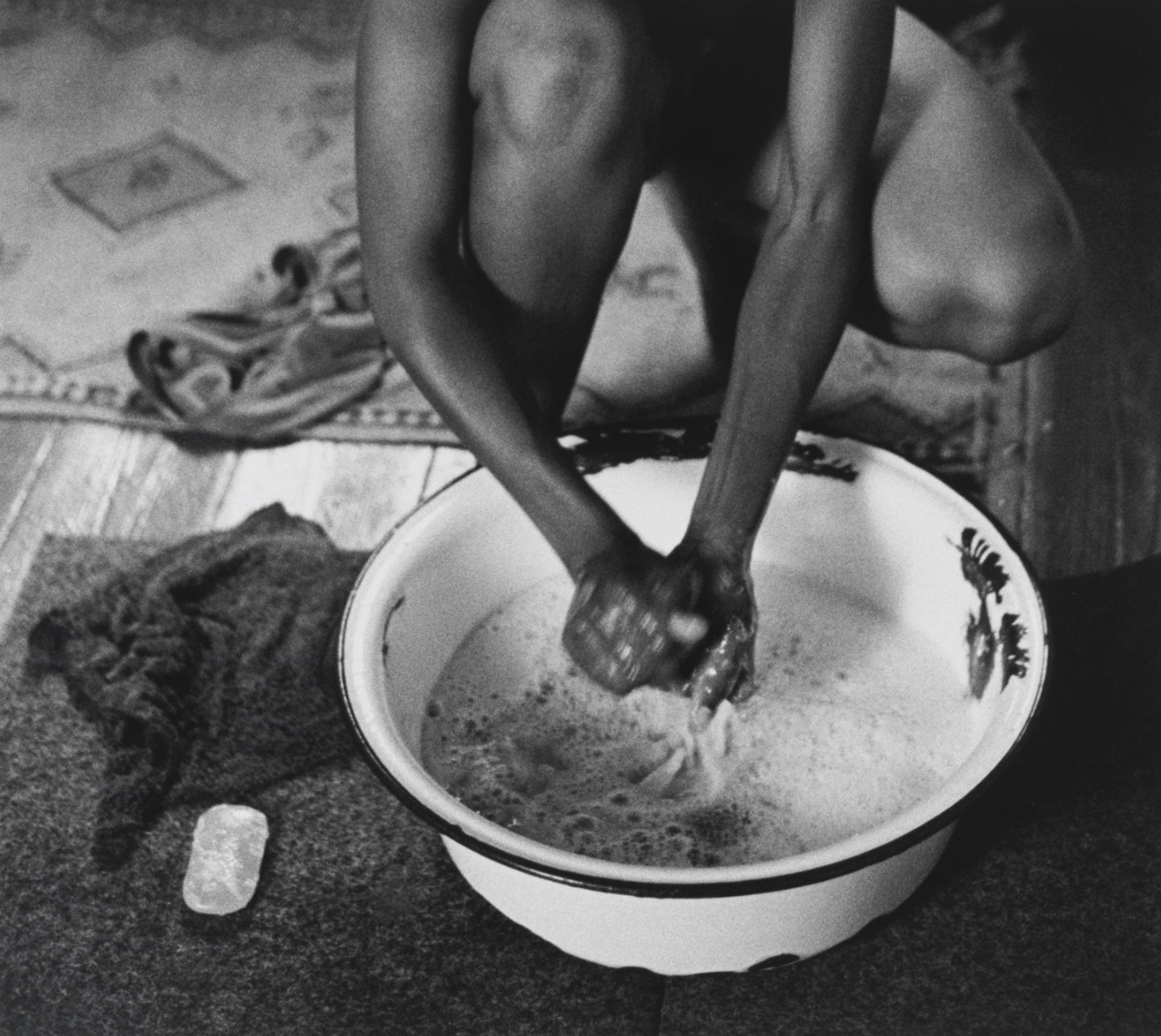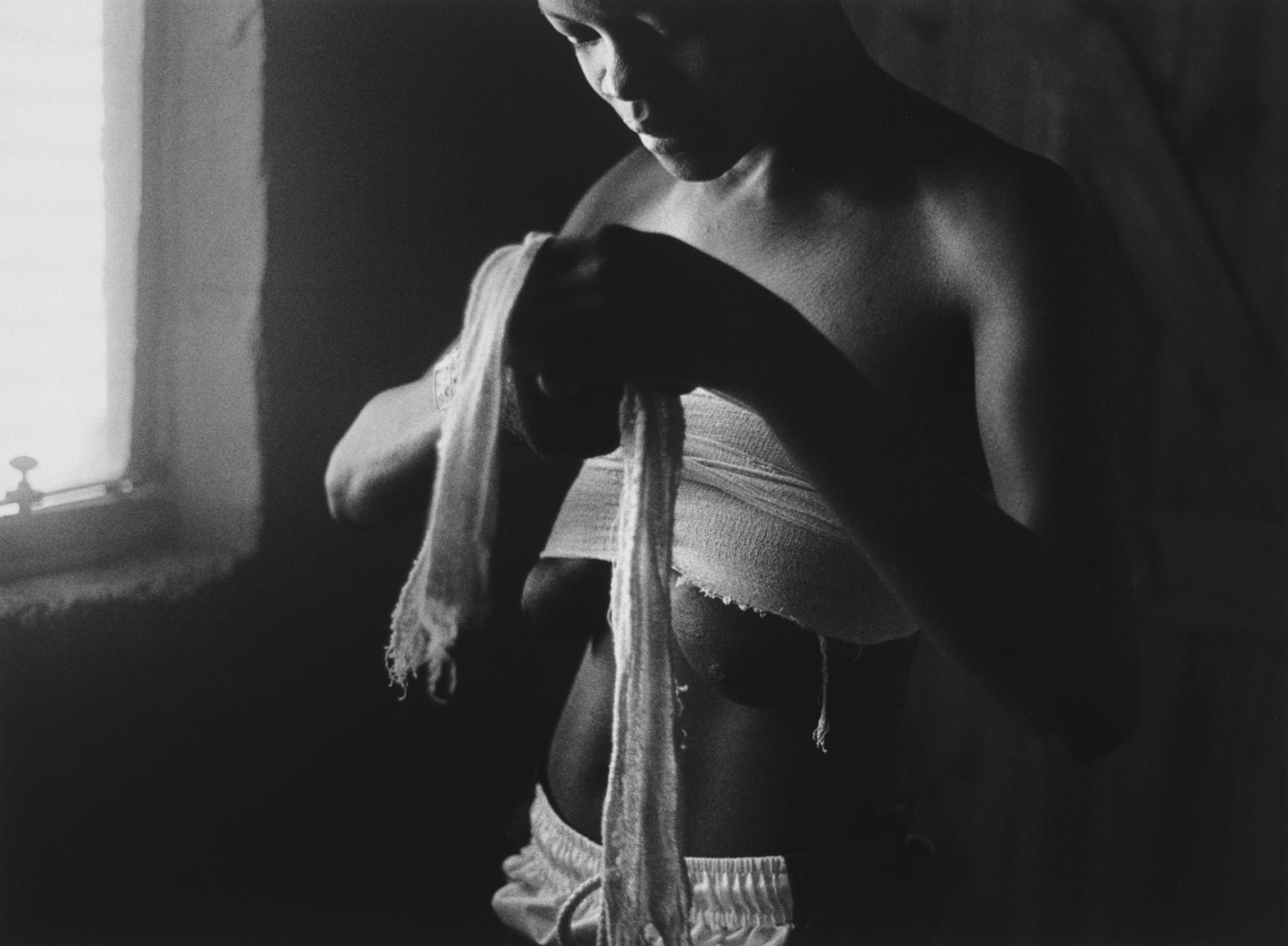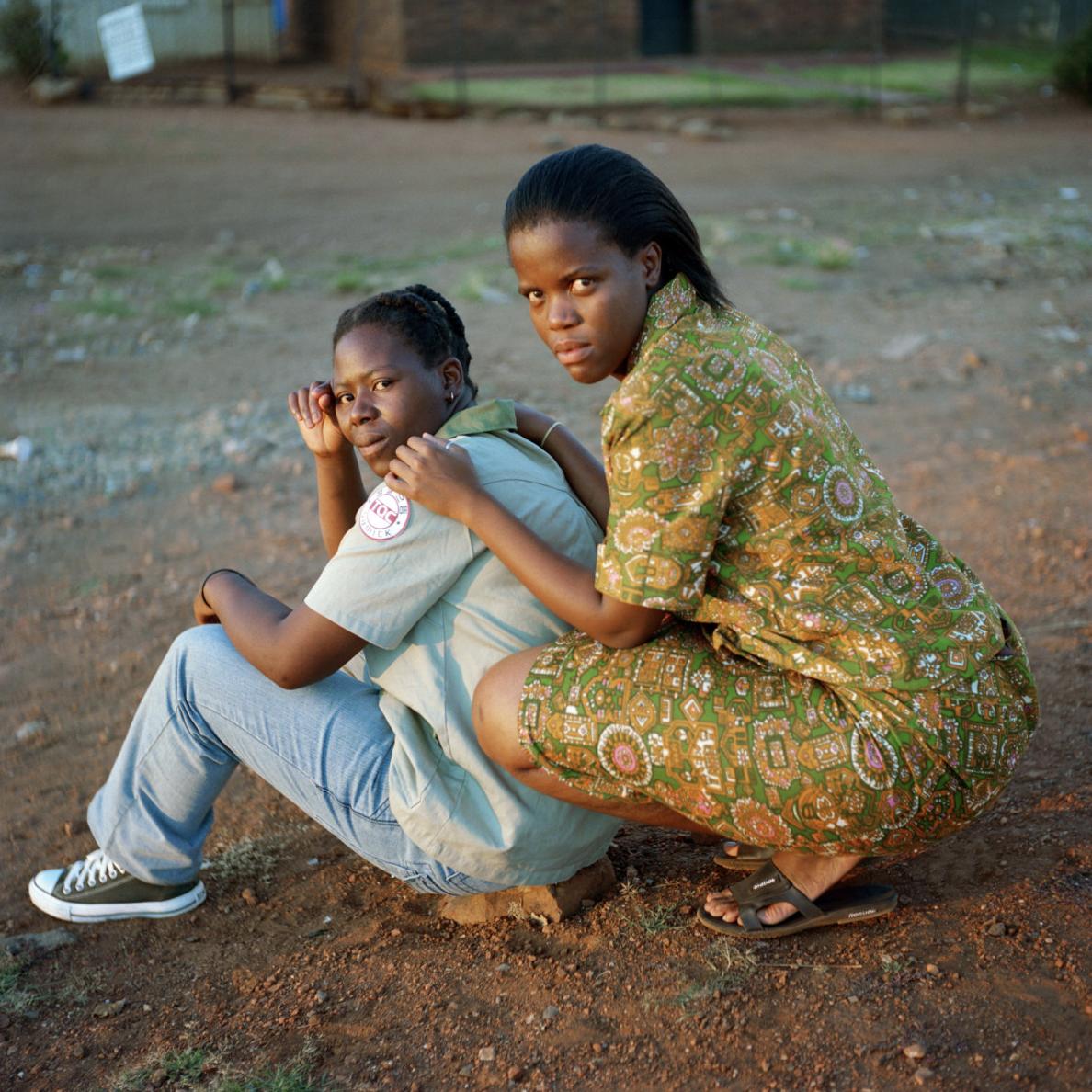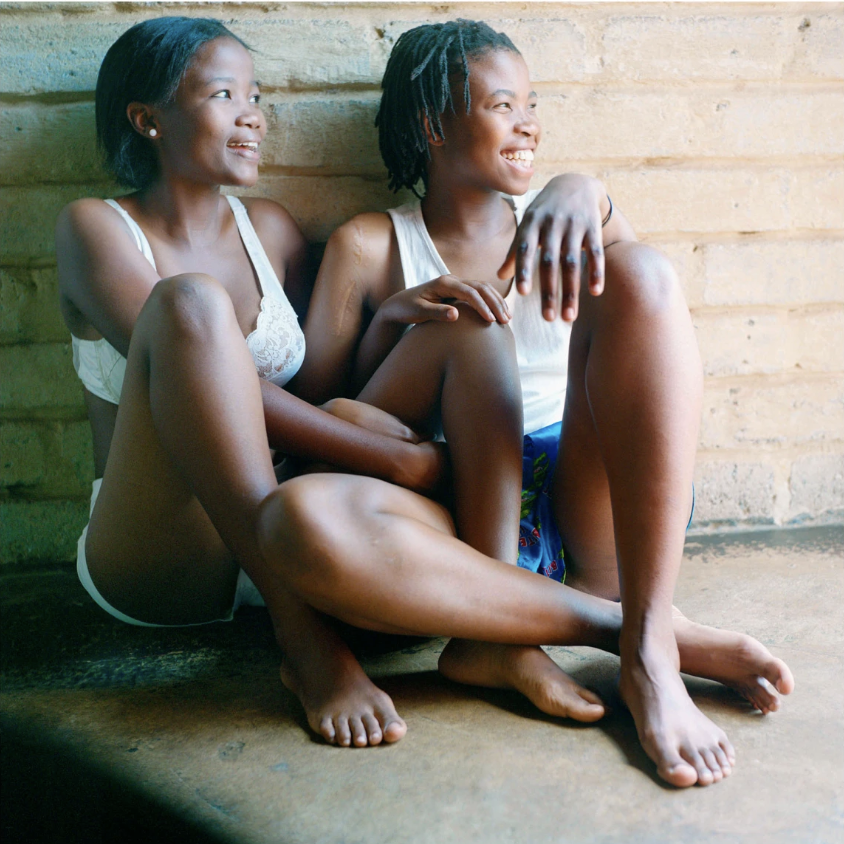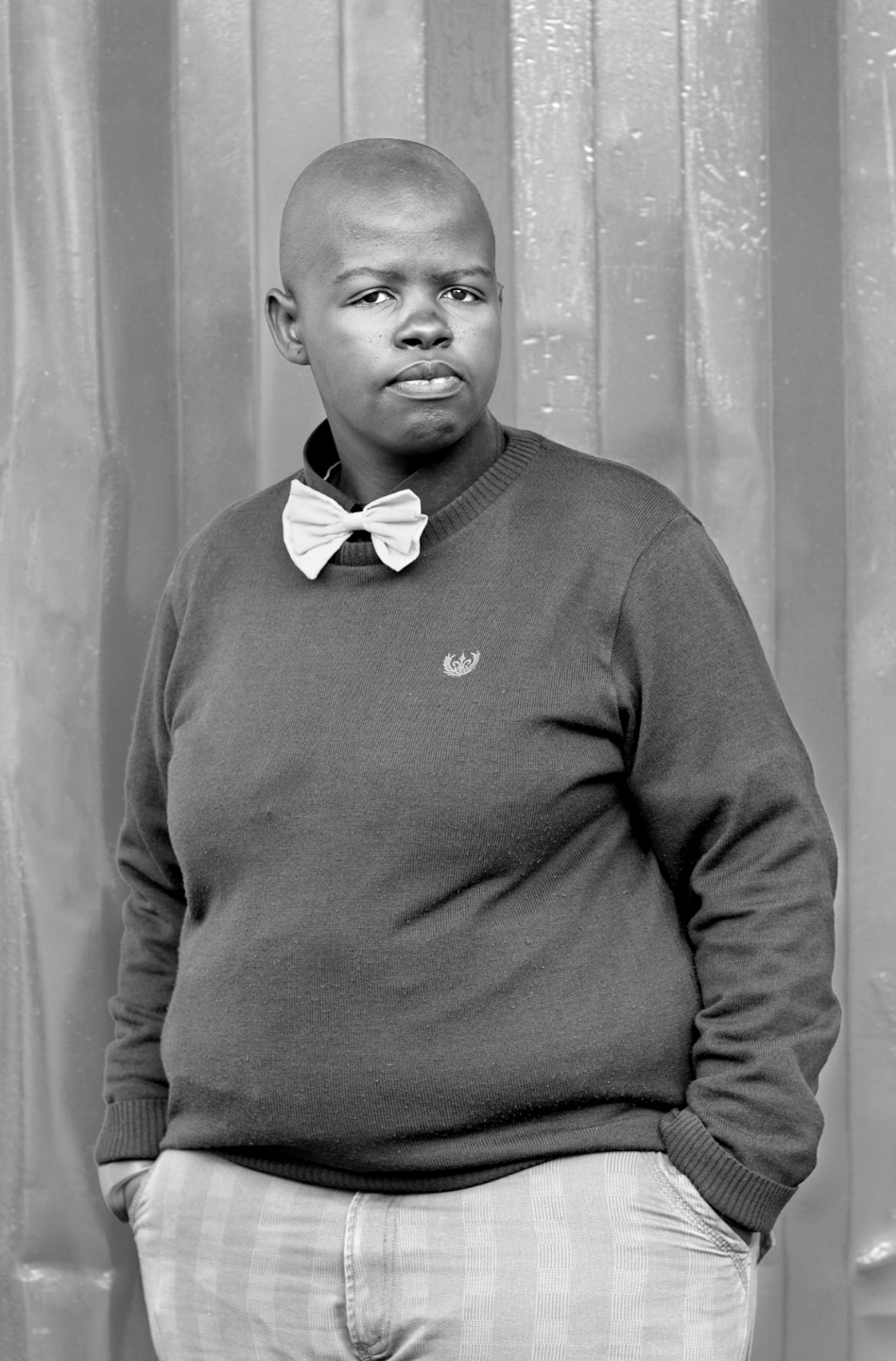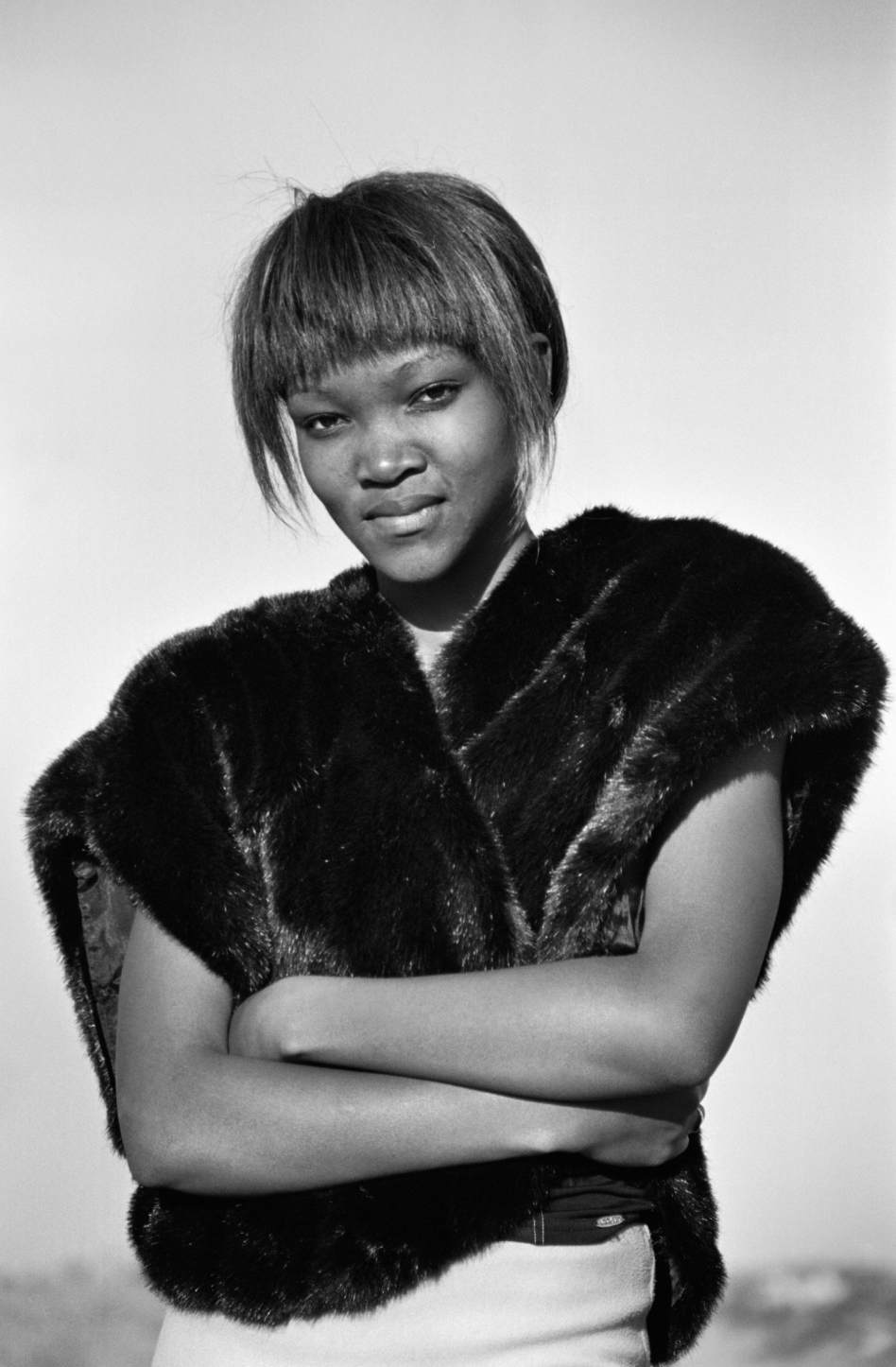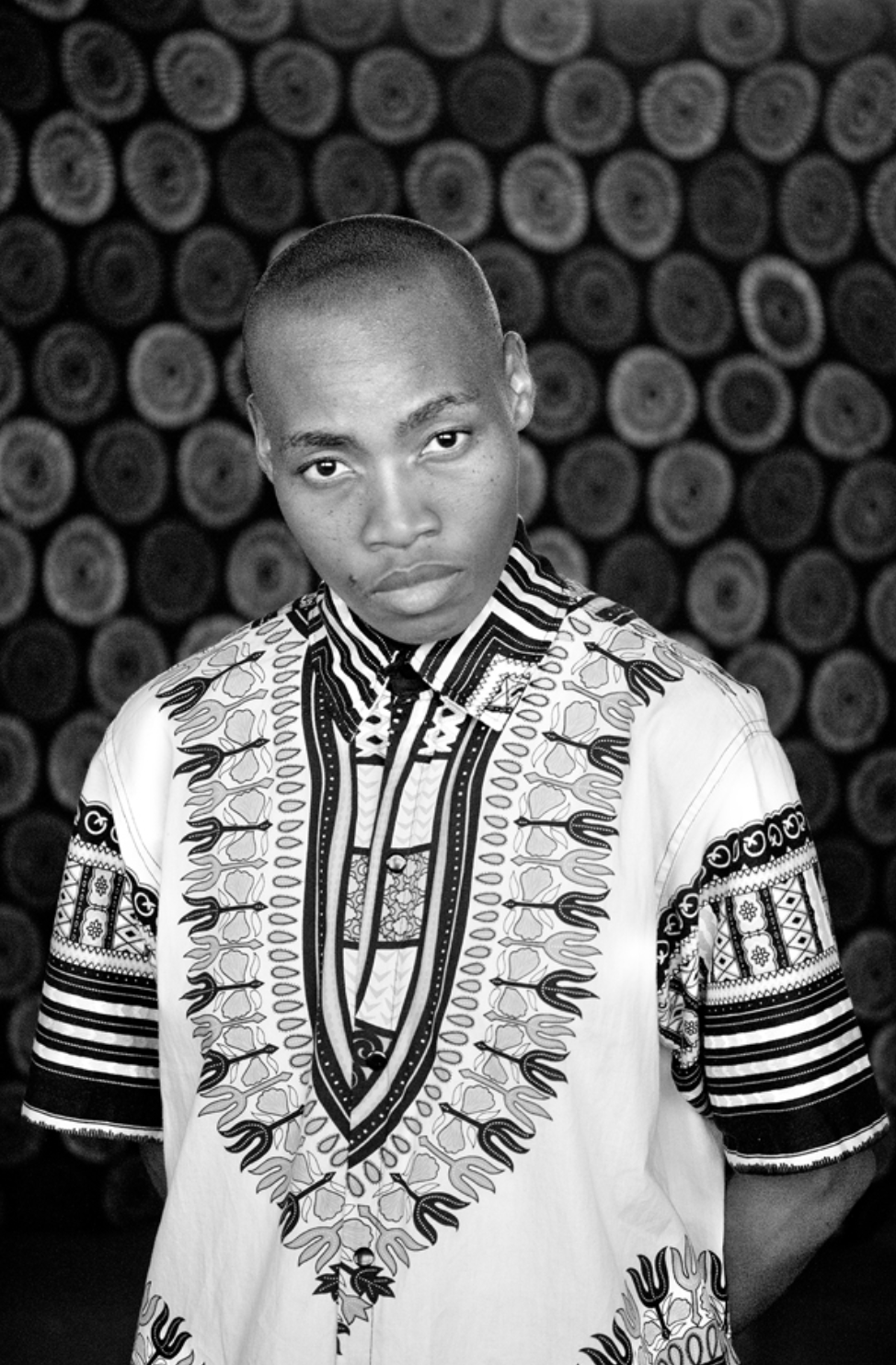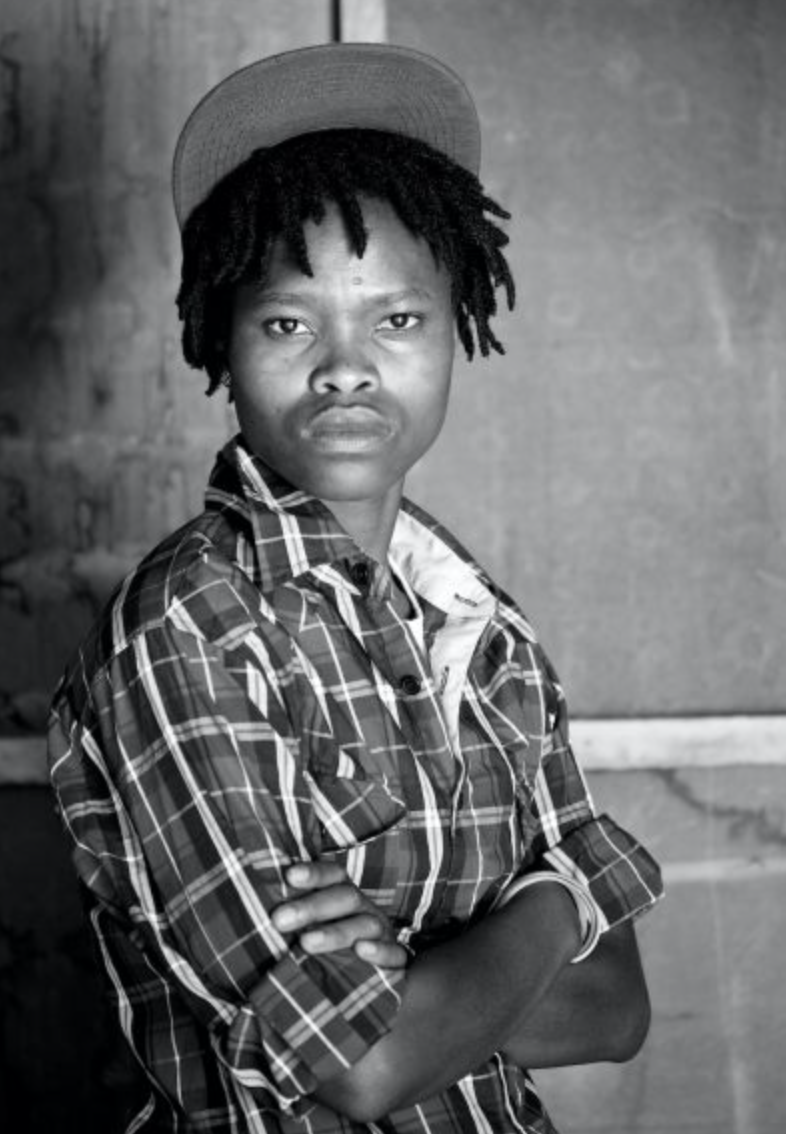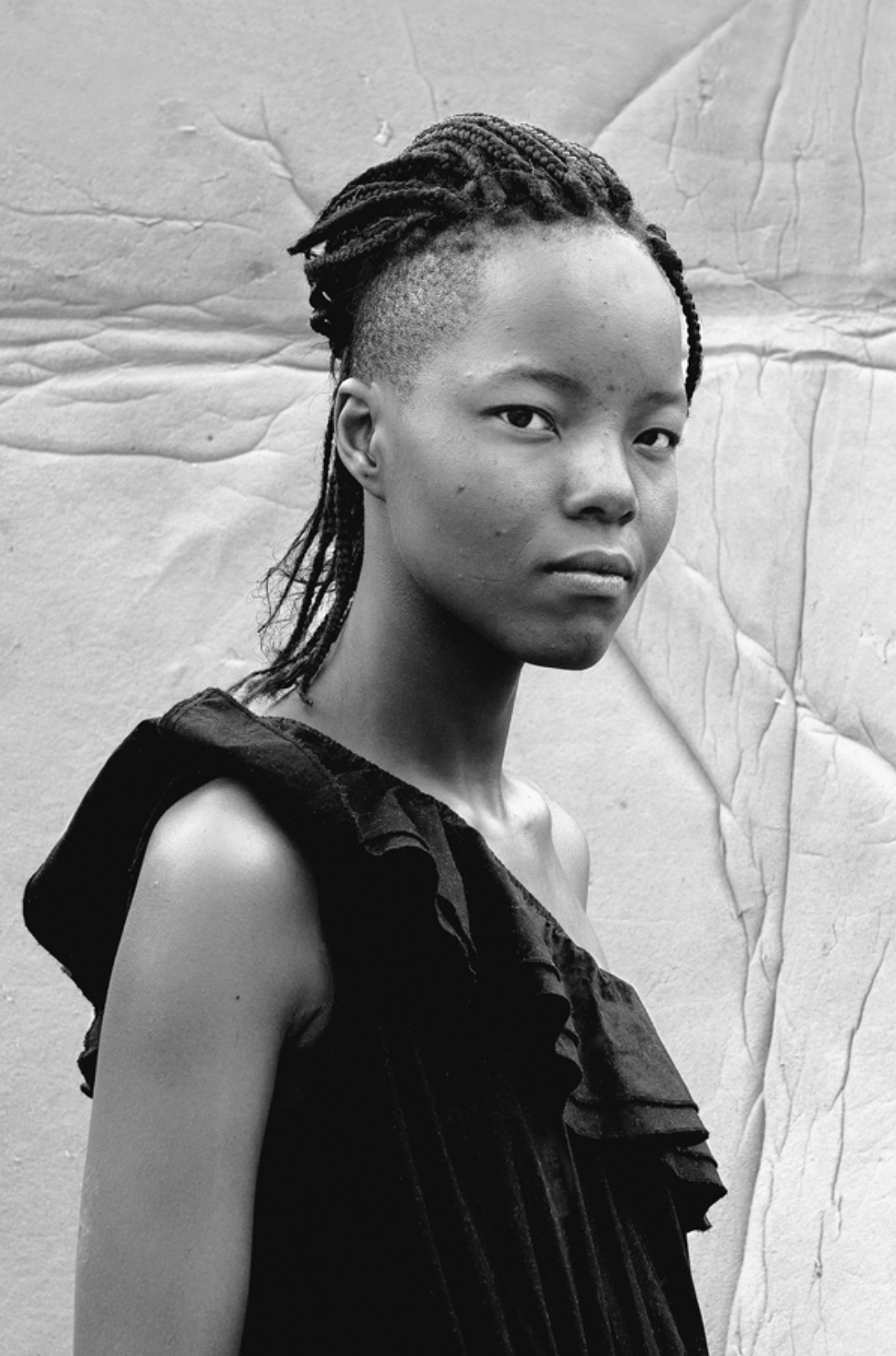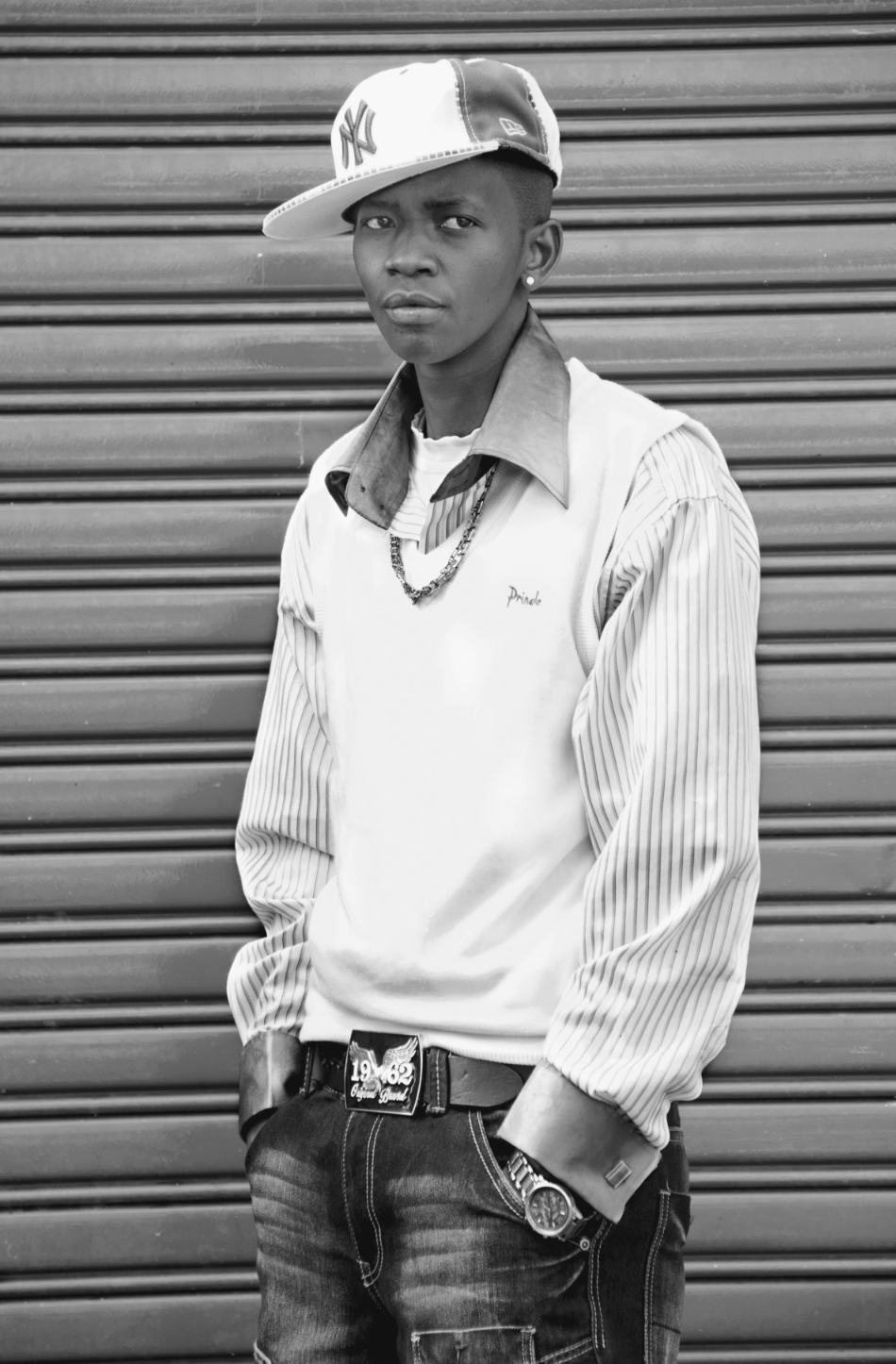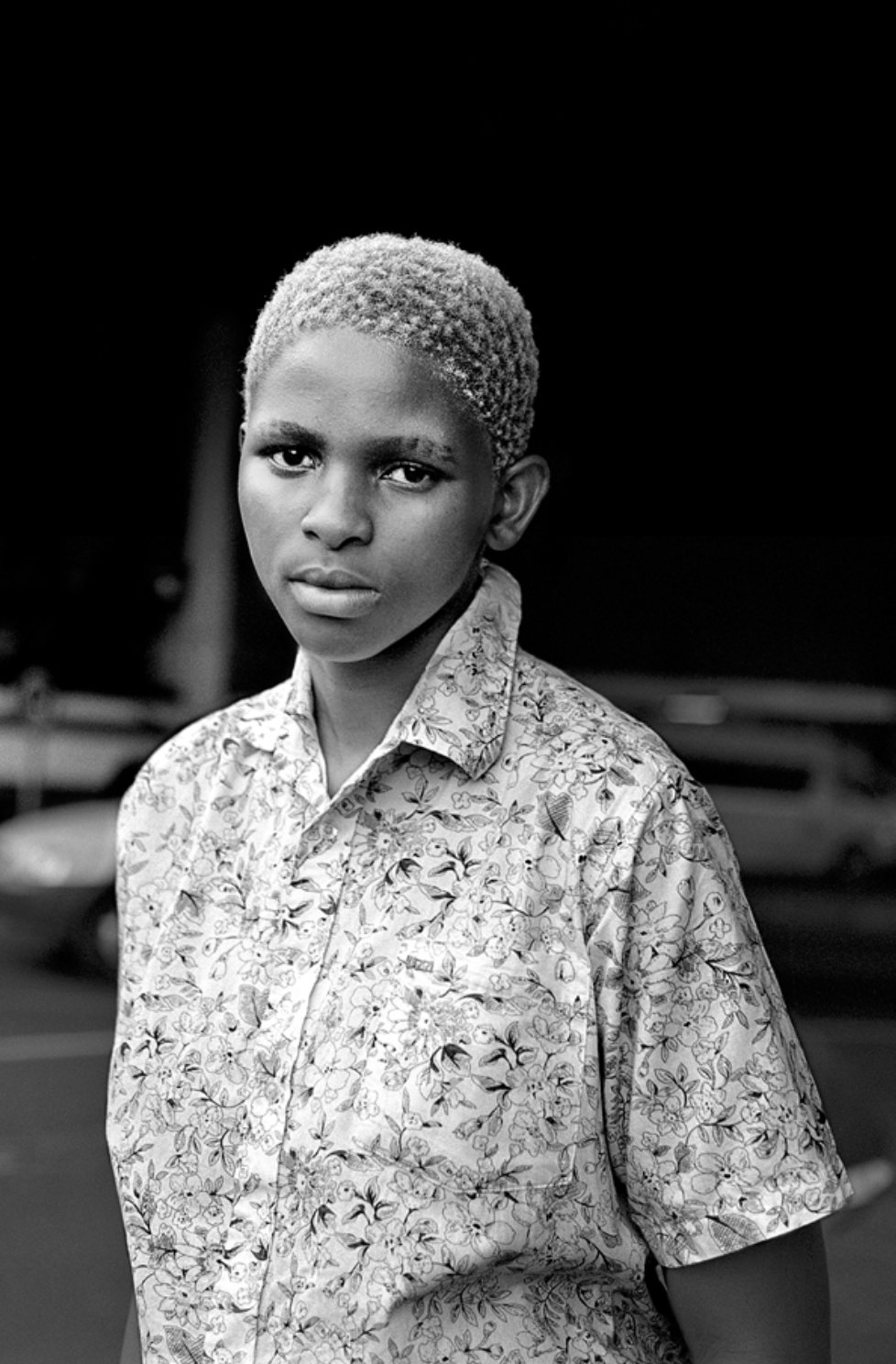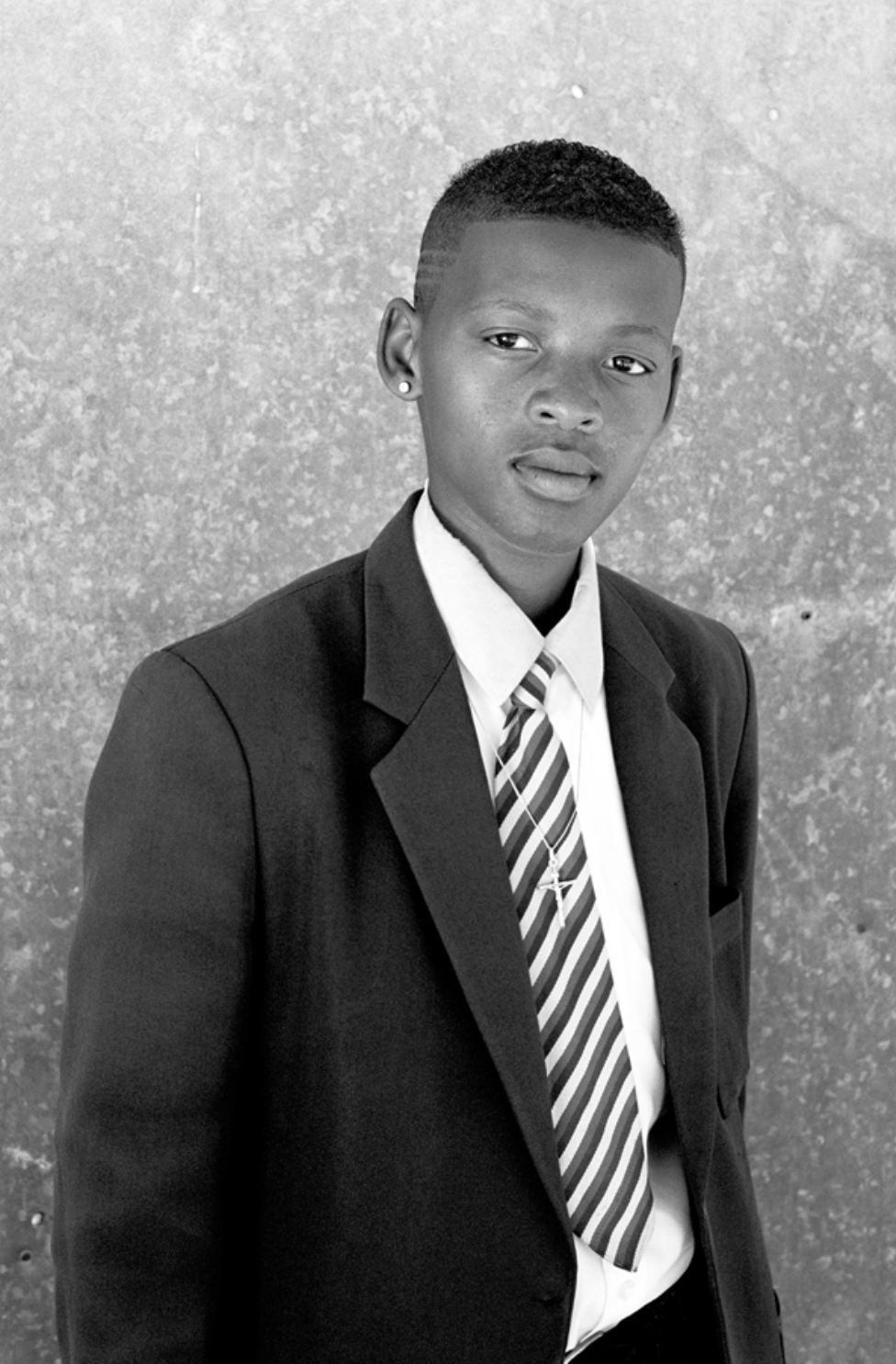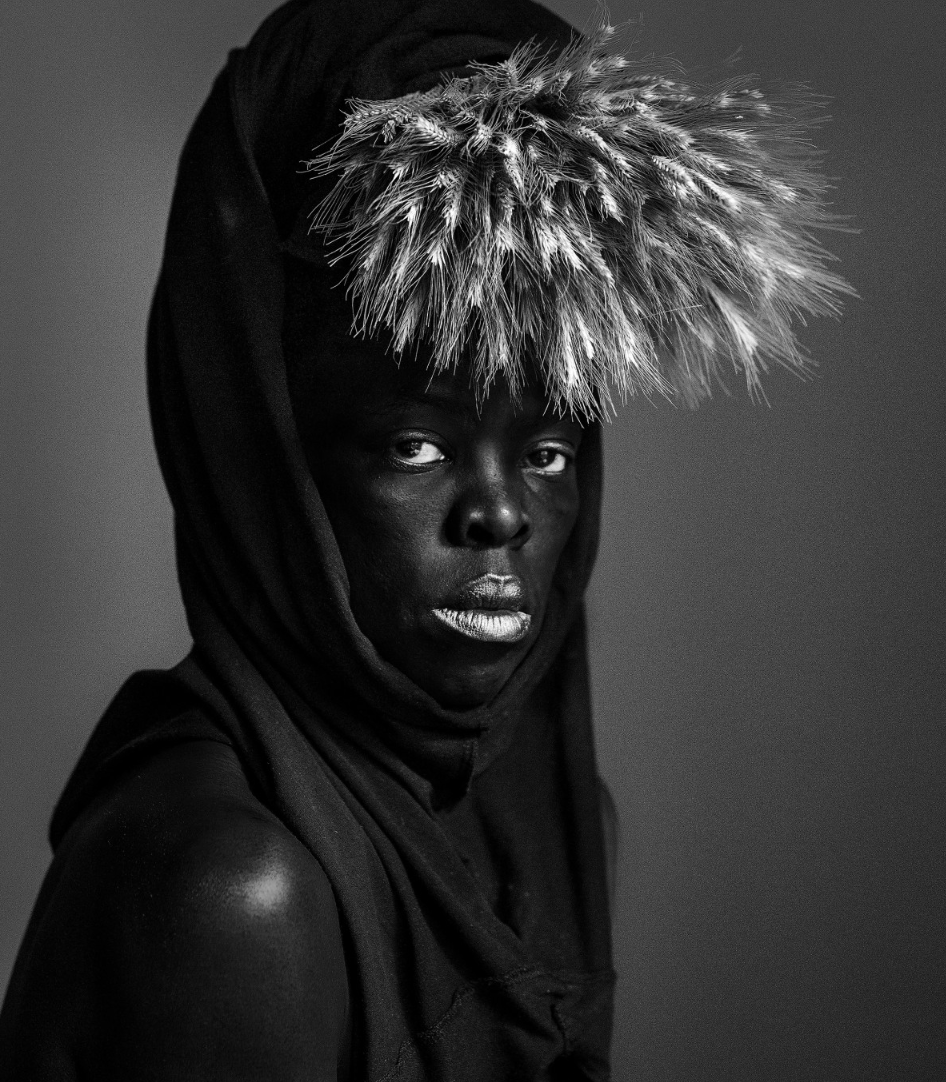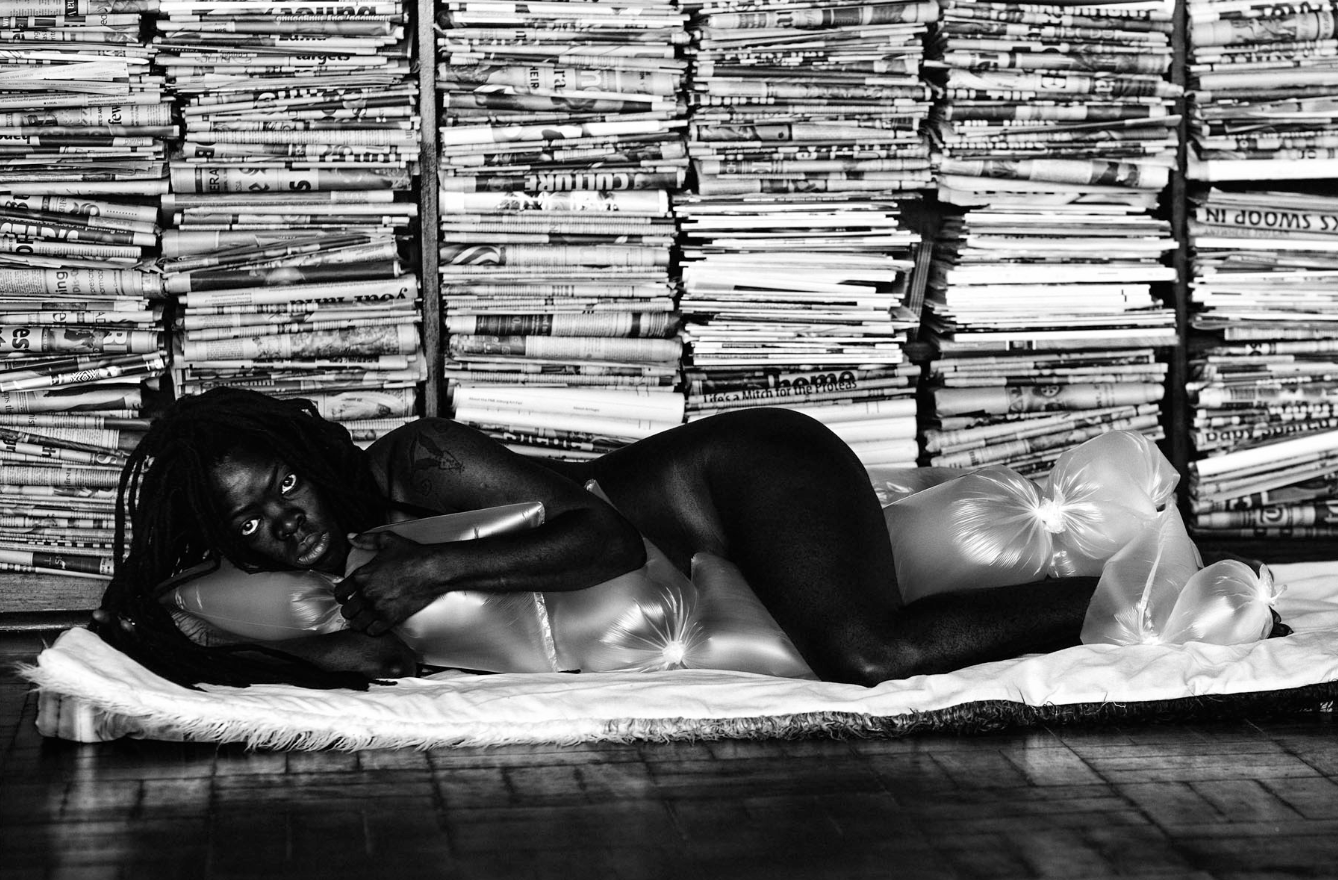zanele muholi
Zanele Muholi (they/them) is a visual activist and photographer. They were born in 1972 in the township of Umlazi, Durban. Muholi grew up during the height of apartheid in South Africa. In South Africa’s post-colonial society, the LGBTQIA+ community is ostracized and criminalized. Zanele faced extreme discrimination for being a black lesbian. Muholi reflects on their past desire for vulnerable representations of people they could relate to during adversity. Recognizing the absence of such photos, Muholi picked up a camera.
Zanele Muholi with their work. Photograph by SARAH LEE, EYEVINE/REDUX
They studied Advanced Photography at the Market Photo Workshop in Newtown, Johannesburg in South Africa, and completed an MFA in Documentary Media at Ryerson University, Toronto in 2009. For almost two decades, they have been documenting the lives of black lesbian, gay, bisexual, transgender, and intersex individuals in various townships in South Africa. Their work has evolved and shifted in so many empowering ways: here is a look at four series from the past twenty years.
Their first body of work that received recognition is called ‘Only Half the Picture’ (2002-2006). This body of work exposes an emotionally charged look at the lives of specifically black lesbians exploring themes of race, sexuality, and gender. The participants in the images are often unidentifiable, making the work less about the individual and more about the collective experience of Black South African queers. The photographs show intimate moments alluding to extreme violence, while simultaneously portraying gentle love for ones self and community.
In their body of work, ‘Being’ (2006-ongoing) Zanele, portrays queer intimacy and belonging by capturing everyday moments between partners in their homes, who have been taught to internalize and hide their identity. Muholi expresses the need for images such as these. Participants consented to be documented in the comfort of their homes alongside lovers and friends. In turn, the viewer is presented with photographs that display black African queerness joyfully and humanely.
Responding to the ongoing discrimination and violence faced by the LGBTQIA+ community, Muholi initiated their series 'Faces and Phases' in 2006, depicting black lesbian, transgender, and gender non-conforming individuals. Today, ‘Faces and Phases’ comprises hundreds of portraits where the participant’s gaze is directed at the viewer. Muholi's self-proclaimed mission, as stated in their artistic biography, is "to rewrite a black queer and trans visual history of South Africa for the world to know of our resistance and existence at the height of hate crimes in South Africa and beyond." Their project, ‘Faces and Phases’ has become an archive celebrating and exposing Black Queerness in a post-apartheid society where LGBTQIA+ hate crimes continue to run rampant within their culture.
They collaborated with people within their community and neighboring townships to expose the world to their experience of voicelessness. The lighting is gentle but direct, the density is soft, and the framing is simple, producing an accessible series for all viewers. The participants stand in front of modest but diverse backdrops, where the viewer is directly confronted with their eye contact. The images are politically charged, expressive, and celebratory.
In a more recent ongoing series, ‘Somnyama Ngonyama: Hail the Dark Lioness’, Muholi shifts the narrative as they turn the camera onto themself, becoming both the participant and the image-maker. “I use my own body and face because the work is meant to be confrontational, both personal and political at the same time,” they write for the British Journal of Photography. While portraying different characters and archetypes, Zanele references political representation and events in South Africa’s history, one example being the 2012 Marikana massacre of mine workers in South Africa. The images confront the viewer through exaggerated contrast, controlled lighting, and intentional adornments that question the common representation of the black body in society.
Researched and written by Kat Miller
BIBLIOGRAPHY:
Abel-Hirsh, Hannah. "Zanele Muholi: Art and Activism." British Journal of Photography, 24 Nov. 2021, www.1854.photography/2021/11/zanele-muholi-art-and-activism/.
"ZANELE MUHOLI." YANCEY RICHARDSON, 14 Jan. 2024, www.yanceyrichardson.com/artists/zanele-muholi.
"Exhibition: ‘Zanele Muholi’ at Tate Modern, London." Art Blart, 22 May 2021, www.artblart.com/tag/zanele-muholi-only-half-the-picture/.
Willis, Deborah. "Zanele Muholi's Faces & Phases." Aperture, 21 May 2015, www.aperture.org/editorial/magazine-zanele-muholis-faces-phases/


